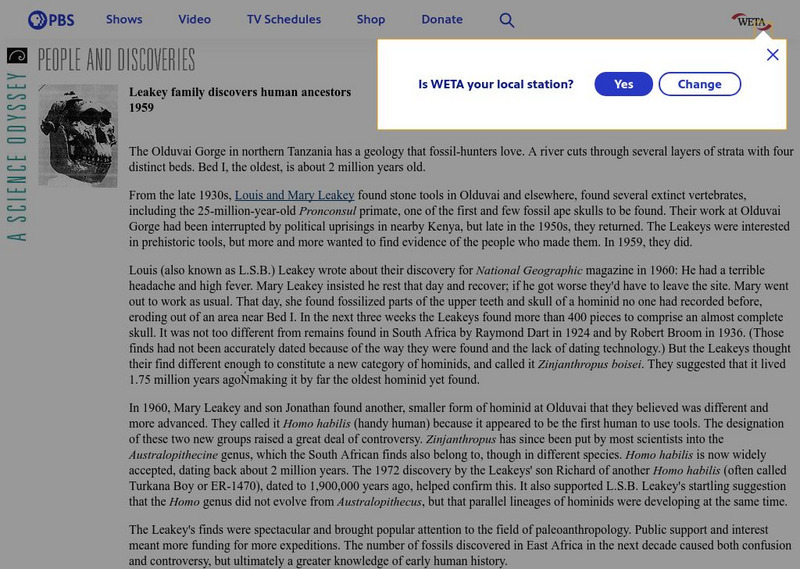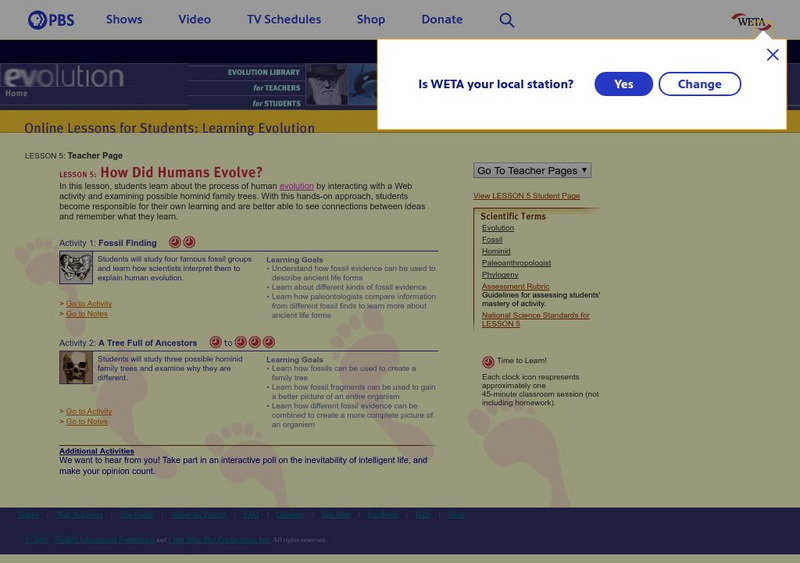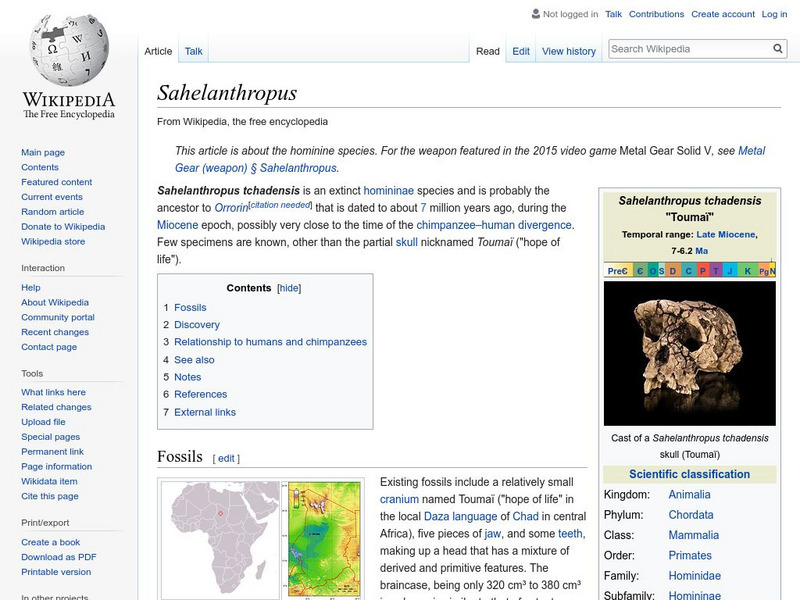Other
Washington State University: Hominid Species Timeline
This complete resource contains a chronological chart that shows the main hominid species and their approximate relationships in time. A description of each hominid is included as well.
Talk Origins Archive
Talk Origins: Fossil Hominids: Richard Leakey
Biography of Richard Leakey that deals with his paleontological work and his efforts to preserve African wildlife.
PBS
Pbs: Leakey Family Discovers Human Ancestors
The PBS site covers the Leakey family and their discoveries in Olduvai Gorge in Tanzania. This information was part of a PBS exploration of human evolution.
PBS
Pbs Learning Media: Laetoli Trackways Diagram
View a diagram of the hominid footprints that archaeologist Mary Leakey's team found at Laetoli in Tanzania.
PBS
Pbs Learning Media: The Transforming Leap, From Four Legs to Two
John Noble Wilford, a "New York Times" science writer, outlines various hypotheses on the origin of bipedalism.
PBS
Pbs Teachers:how Did Humans Evolve?
Explore paleoanthropology by going on a virtual "dig" to answer questions about famous fossil finds. Explain how alternate hominid family trees result from different interpretations of the same fossil evidence.
Wikimedia
Wikipedia: Sahelanthropus
An encyclopedia article on the oldest known hominid discusses the features of the fossils that were found, the region in which they were found, and what this means for human evolution.
Other
Cartage.org: Australopithecus Afarensis
This essay provides a picture along with brief physical description of one of modern man's earliest ancestors.
Curated OER
Unesco: Tanzania: Ngorongoro Conservation Area
The Ngorongoro Conservation Area spans vast expanses of highland plains, savanna, savanna woodlands and forests. Established in 1959 as a multiple land use area, with wildlife coexisting with semi-nomadic Maasai pastoralists practicing...




